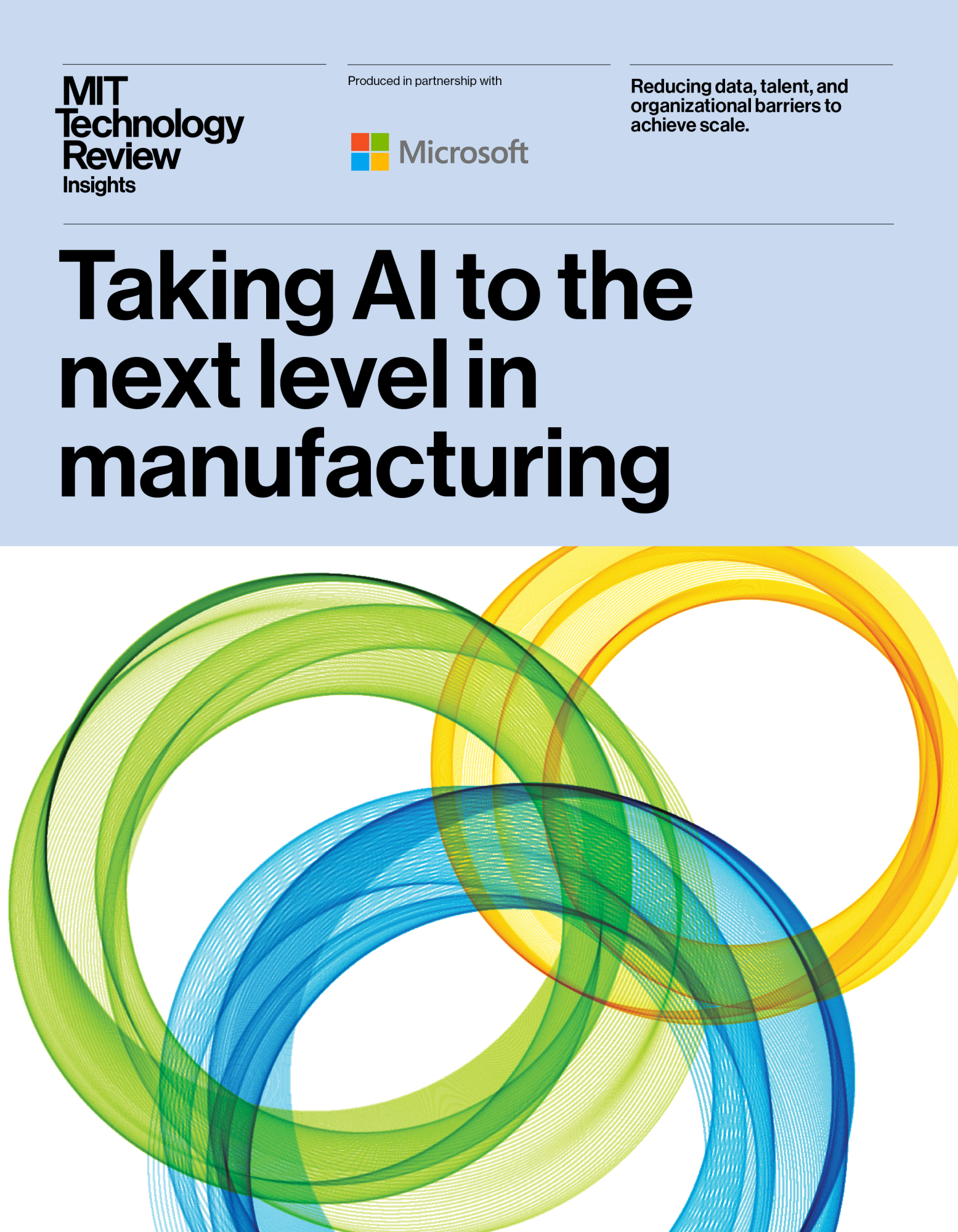Taking AI to the next level in manufacturing
Few technological advances have generated as much excitement as AI. In particular, generative AI seems to have taken business discourse to a fever pitch. Many manufacturing leaders express optimism: Research conducted by MIT Technology Review Insights found ambitions for AI development to be stronger in manufacturing than in most other sectors.

Manufacturers rightly view AI as integral to the creation of the hyper-automated intelligent factory. They see AI's utility in enhancing product and process innovation, reducing cycle time, wringing ever more efficiency from operations and assets, improving maintenance, and strengthening security, while reducing carbon emissions. Some manufacturers that have invested to develop AI capabilities are still striving to achieve their objectives.
DOWNLOAD THE REPORTThis study from MIT Technology Review Insights seeks to understand how manufacturers are generating benefits from AI use cases-particularly in engineering and design and in factory operations. The survey included 300 manufacturers that have begun working with AI. Most of these (64%) are currently researching or experimenting with AI. Some 35% have begun to put AI use cases into production. Many executives that responded to the survey indicate they intend to boost AI spending significantly during the next two years. Those who haven't started AI in production are moving gradually. To facilitate use-case development and scaling, these manufacturers must address challenges with talents, skills, and data.
Following are the study's key findings:
- Talent, skills, and data are the main constraints on AI scaling. In both engineering and design and factory operations, manufacturers cite a deficit of talent and skills as their toughest challenge in scaling AI use cases. The closer use cases get to production, the harder this deficit bites. Many respondents say inadequate data quality and governance also hamper use-case development. Insufficient access to cloud-based compute power is another oft-cited constraint in engineering and design.
- The biggest players do the most spending, and have the highest expectations. In engineering and design, 58% of executives expect their organizations to increase AI spending by more than 10% during the next two years. And 43% say the same when it comes to factory operations. The largest manufacturers are far more likely to make big increases in investment than those in smaller-but still large-size categories.
- Desired AI gains are specific to manufacturing functions. The most common use cases deployed by manufacturers involve product design, conversational AI, and content creation. Knowledge management and quality control are those most frequently cited at pilot stage. In engineering and design, manufacturers chiefly seek AI gains in speed, efficiency, reduced failures, and security. In the factory, desired above all is better innovation, along with improved safety and a reduced carbon footprint.
- Scaling can stall without the right data foundations. Respondents are clear that AI use-case development is hampered by inadequate data quality (57%), weak data integration (54%), and weak governance (47%). Only about one in five manufacturers surveyed have production assets with data ready for use in existing AI models. That figure dwindles as manufacturers put use cases into production. The bigger the manufacturer, the greater the problem of unsuitable data is.
- Fragmentation must be addressed for AI to scale. Most manufacturers find some modernization of data architecture, infrastructure, and processes is needed to support AI, along with other technology and business priorities. A modernization strategy that improves interoperability of data systems between engineering and design and the factory, and between operational technology (OT) and information technology (IT), is a sound priority.
This content was produced by Insights, the custom content arm of MIT Technology Review. It was not written by MIT Technology Review's editorial staff.